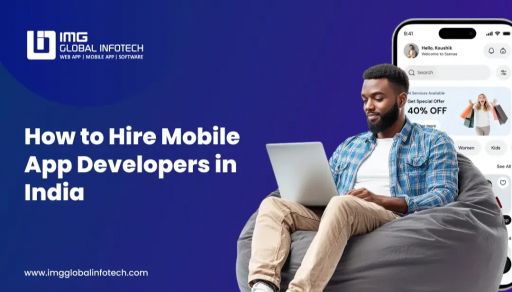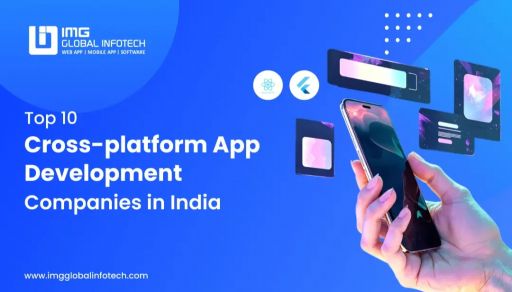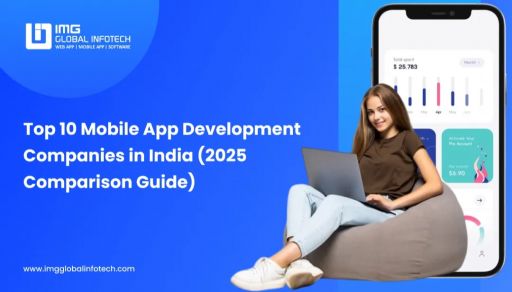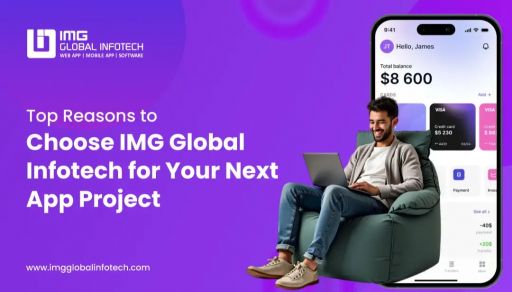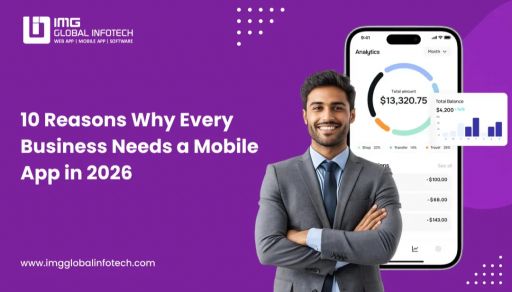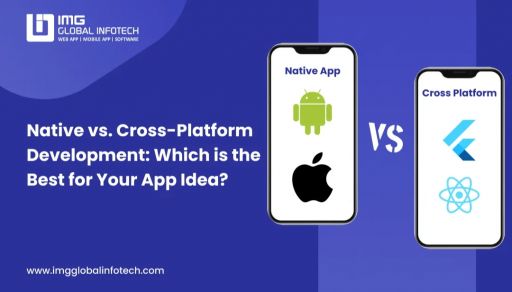How To Convert An Android App To IOS Or Vice Versa: Full Guide
Dipti Singhal
Jul 16, 2025
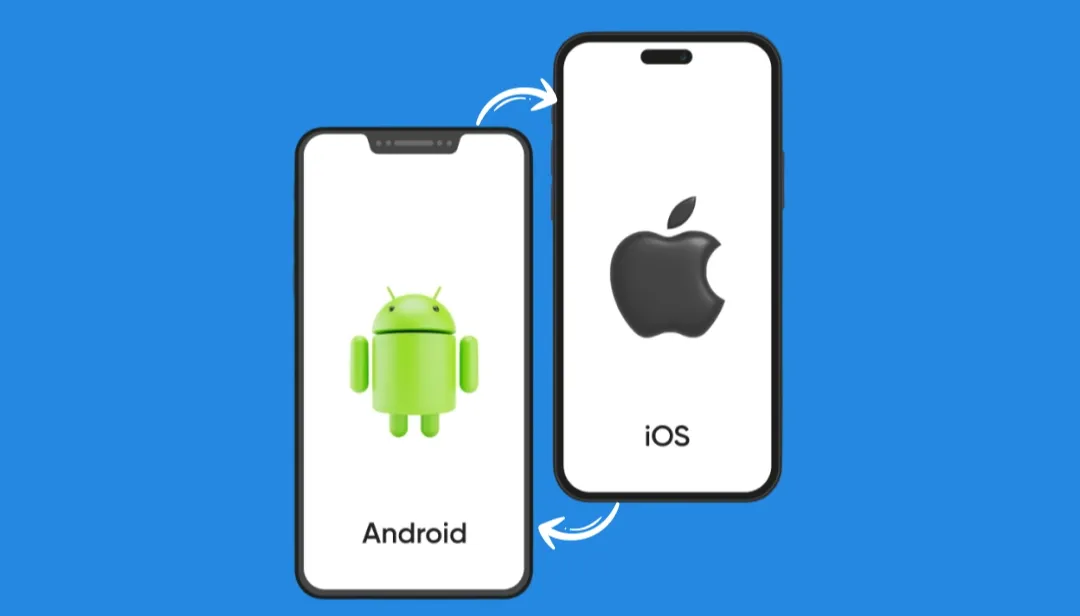
In today’s rapidly changing mobile-first world, having your app available on both the Android and iOS operating systems is more of a necessity than a convenience. Many businesses will launch their app on one operating system to test demand in the market and then expand later as demand grows.
In many cases, the need to be cross-platform will become crucial in order for the business to scale revenue and reach. However, converting an android app to ios or vice versa, is more than taking code from one project and copying it over to another project.
This blog will look at a step-by-step approach to convert an android app to ios, as well as challenges involved in the conversion process, and how to leverage new tools and utilize best practices to ensure a smooth transfer that maximizes performance, user experience, and business growth.
Why Should Businesses Convert an Android App to iOS or Vice Versa?
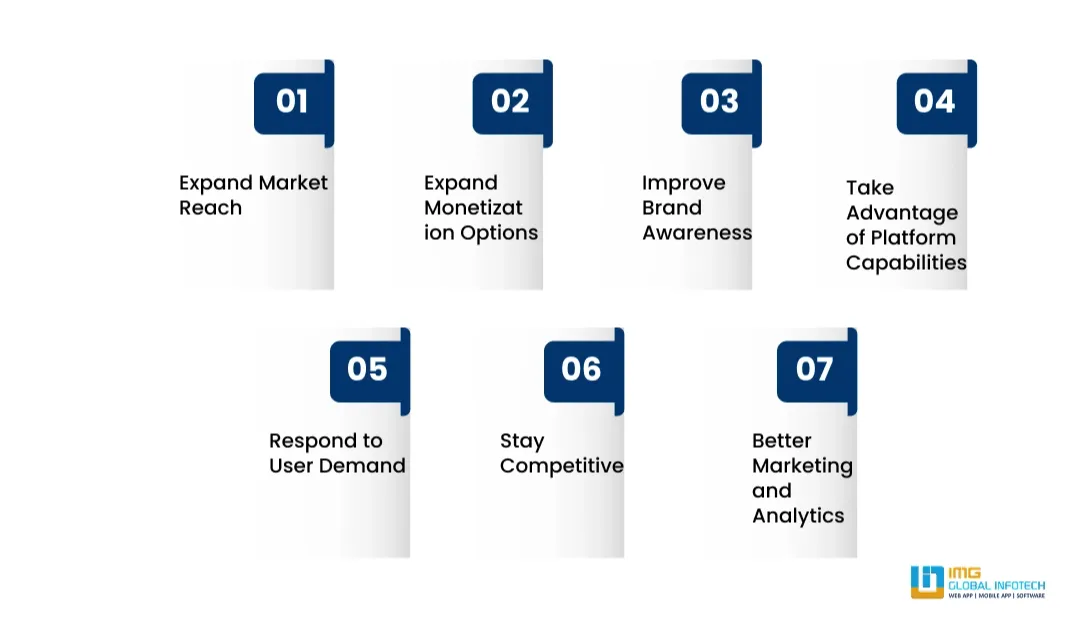
It is generally impractical to remain solely on one of either Android or iOS in the current competitive digital landscape. Generally, many companies start with one platform and they just want to productize the app and save costs. But later to port an iOS app to Android(or it can also be an iOS app to Android) will open so many more doors. Here are 7 reasons to consider the conversion.
1. Expand Market Reach
Each platform distinctly appeals to various segments of customers. While Android retains a clear global market-share advantage, iOS dominates certain parts of the world, predominantly the US, Canada, and Europe all regions where the consumption of mobile using iOS is higher than that of Android. Reaching both platforms allows your business to access a broader and more diverse audience.
2. Expand Monetization Options
iOS users are also typically more affluent than Android users and report making more in-app purchases. Regardless, Android has a considerable impact on revenue generated through advertising. Therefore, expanding to both platforms can give businesses a balance between monetization options and ultimately enhance profit.
3. Improve Brand Awareness
If you want an iOS to Android app converter you should know when your app is on both platforms, you create greater brand recognition and brand reliability. Users are more likely to trust brands with a visible footprint across both platforms. Both users see a business that is exerting a high level of professionalism and capability.
4. Take Advantage of Platform Capabilities
As previously mentioned, each platform has its capabilities. iOS is a more user-friendly experience with fewer security challenges. Android provides users with more flexibility for customization and personalization, as well as stronger integration with its own Google services. Expanding to both platforms would give your business the option to improve user experience on either platform.
5. Respond to User Demand
When your user base grows, it also diversifies into multiple segments with specific needs. As you build your user base, your audience is going to ask for the app on the platform of their choice. Answering that request clearly shows your business’ commitment to altering its offering based on user feedback, and this will help you build brand loyalty and customer satisfaction.
6. Stay Competitive
If there is competition in both markets and you are only found in one, you might be losing out on market share. Having a presence in both venues will allow you to grow market share, as well as continue to stay relevant within your market.
7. Better Marketing and Analytics
Availability in both venues allows for better A/B testing, optimization of campaigns, metrics tracking user interaction and behaviors. Businesses can see how users behave and interact differently in each of the venues, and leverage it to better their performance.
Differences to Consider When Porting an Android App to Ios or Vice-Versa
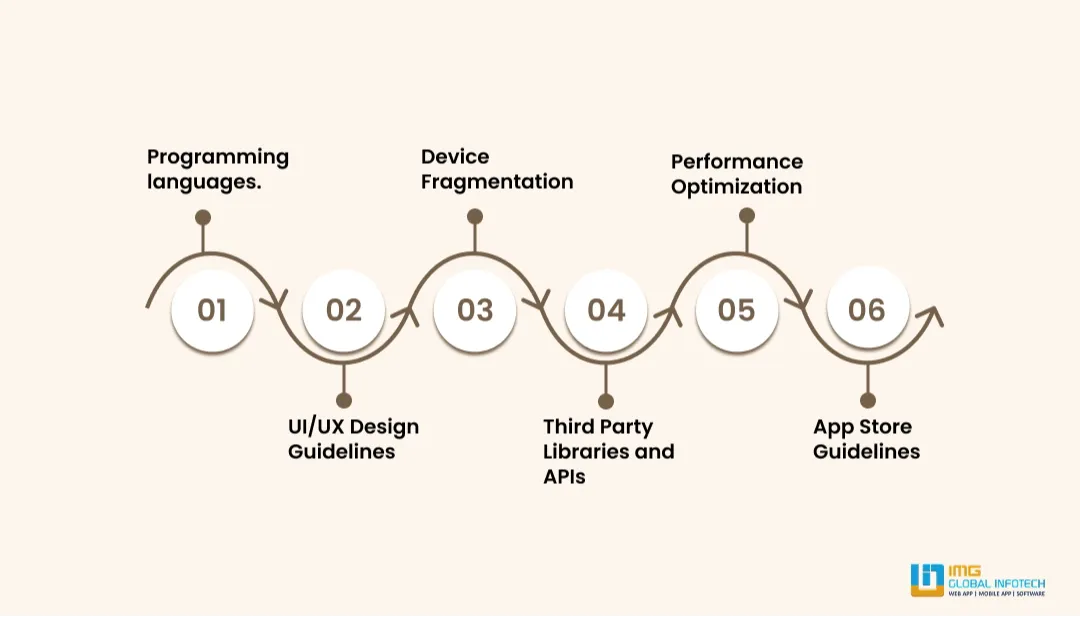
iOS app to android app converter or vice-versa is not simple copy and paste. There are fundamental differences in consideration between the two platforms, which will need to be considered or addressed as you port. Here are some of the primary elements you should be mindful of when porting:
1. Programming languages.
There are two programming languages most are built with for Android applications. Java, or Kotlin. To android apk to ios app converter for iOS applications, the programming languages are Swift or Objective-C. You cannot reuse the code on either of these directly, which means that everything will need to be re-coded in the native programming language for the target platform.
2. UI/UX Design Guidelines
Android utilizes Material Design principles, and iOS utilizes Human Interface Guidelines. In terms of android apk converter to ios layouts, navigation flows, buttons and gestures there are a lot of differences. The user interface must be redeveloped using the target systems, guidelines for a truly native experience.
3. Device Fragmentation
Android has a huge number of different types of devices and screen sizes, so optimization can be a much larger challenge. iOS has greater standardization, as the variants of devices are less. During android apk to ios ipa converter, the Mobile app development company should try to factor in more responsive design considerations on mobile phones and tablets.
4. Third Party Libraries and APIs
To android app to ios app converter some of the libraries or APIs that are using on one platform do not exist or are not compatible on the other. The developers are going to have to look for alternatives, or try to replicate the functional components using native tools within the target platform.
5. Performance Optimization
Performance expectations could vary from platform to platform. Android could require optimization for background processes and memory usage, while iOS could require optimization to ensure that a lot of animations are fluid and responsive.
6. App Store Guidelines
Apple App Store and Google Play Store have different guidelines when it comes to submission, review time, and content. Preparing an app to convert android to ios to publish your app should be in accordance with the guidelines from each platform.
Step-By-Step Process To Convert an Android App To Ios
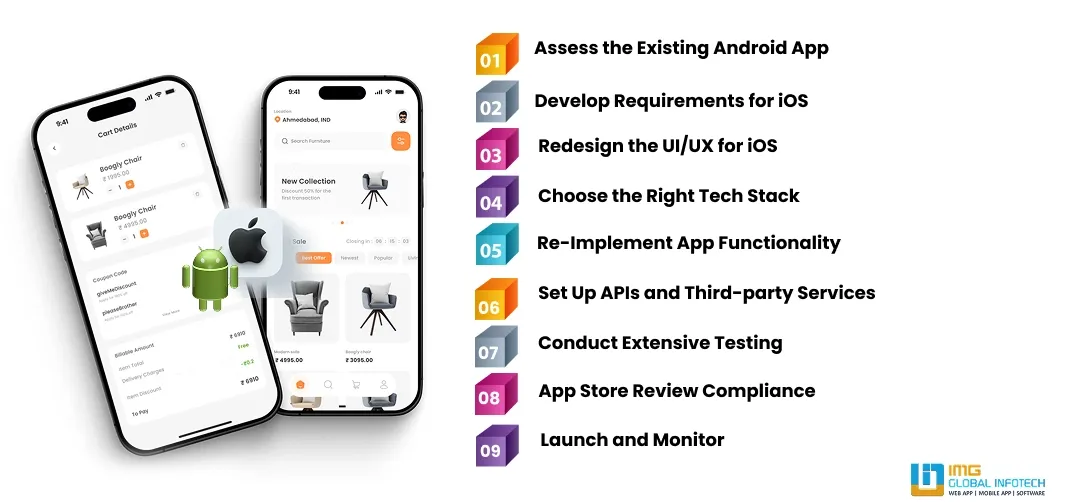
While it is tempting to think of converting an iOS app to Android as simply a process of duplication, the reality is that it takes much more time to convert an app for iOS because you are making an app for a completely different platform. In addition to having different design guidelines, the codebase and functionality both differ. Below is a step-by-step guide with Android app security best practice that allow you to have some quality processes in place for a successful android app to ios app converter online
1. Assess the Existing Android App
Before you begin your conversion of the iOS app to Android, do a full audit of the existing Android app. Evaluate the app’s structure, features, tech stack, performance, and reviews, then decide what you can keep, what you can truly convert with modifications, and what needs to be built from scratch for the iOS app.
2. Develop Requirements for iOS
After you look through the Android version of your app, the next step is to start developing the requirements for the iOS app. Android app to iPhone app converter usually takes form as platform-specific features, design elements, performance measures, and integration points. Produce a list that details what stays the same and what must differ.
3. Redesign the UI/UX for iOS
In iOS, the design is rooted in Apple's Human Interface Guidelines, which are similar to Android's Material Design. So mobile app development lifecycle there are significant differences in buttons, navigation styles, tabs, gestures, fonts, well, basically every aspect should look differently for the native iOS experience. When it comes to porting android apps to ios designing, focus on clean, user-friendly, and responsive design principles that have been optimized for Apple devices.
4. Choose the Right Tech Stack
To convert iOS apps to android online, android applications are generally developed using Java and Kotlin, while iOS applications are developed primarily using Swift or Objective-C. It is a best practice to rewrite the application in Swift if you are expecting to keep up with iOS app development on newer devices. During this step of android to ios converter you will want to reference only libraries, APIs, and development tools that are compatible with iOS.
5. Re-Implement App Functionality
Begin android to ios converter online by implementing each feature from the Android app development in Swift for iOS. Clearly identify the feature that was implemented on the Android version and ensure that you are achieving feature parity, but also take advantage of iOS functionality if and where it can be improved. There are platform based features that you should replace or rewrite, for example, platform-specific components such as push notifications, maps, payment gateways (such as Google Play), or in-app purchases.
6. Set Up APIs and Third-party Services
Make sure any API is compatible to use in the iOS version that was established prior with the first Android version of the application. If the particular service is platform specific, it may be wise to look for alternate services that are iOS based. Configure properly any third-party tools required for use, like analytics, crash reporting, and user engagement.
7. Conduct Extensive Testing
Testing is an important phase of development. Conduct in-depth QA testing to verify that your application is stable, functional, and responsive across a variety of Apple products and Apple Operating System versions. Make sure to apply both manual and automated testing approaches to test UI performance, speed, bugs, and usability.
8. App Store Review Compliance
Apple has a very formal approach to app submissions. It is critical that your application conforms with all design, content, security, and performance standards established in the App Store Review Guidelines. Prepare the required assets like app icon, description, screenshots, and privacy policy for submission.
9. Launch and Monitor
After you have the iOS app development ready and it has passed compliance and review, just submit it to the Apple App Store. During the launch, pay attention to user feedback, crash reports, and performance metrics to address any issues that may arise post-launch and provide updates.
How Much Does It Cost To Convert An Android App To Ios Or Vice Versa?
Typically, by converting an android app to ios online, it costs between $30,000 and $60,000 to convert an Android app to iOS or vice versa depending on application complexity, features, and design elements. While it may seem that it would not be challenged to convert an application logically, it is important to understand that conversion requires complete re-development specifically for the platform selected. There are several high-level factors that will determine the cost of the conversion:
1. App Complexity
Simple applications (fewer features in the application) are easier and more cost effective to convert to either platform of your choice, however, if your Android app utilizes features that rely on real time data, third party integrations, or pushes complex workflows into the application, the costs can escalate quickly depending on the added development time and testing around the workflow process.
2. UI/UX Redesign
Each platform presents their own design standards and patterns for their respective platforms. When converting an application the potential to revise/simplify the UI/UX to meet either Android's Material Design , or the iOS Human Interface Guidelines means you may have to revise your screens, and this is an additional cost.
3. Code Rewrite & Technology Stack
Android and iOS use different programming/scripting languages; therefore, the whole application is rewritten and a new technology stack is created with either Swift (for iOS) or Kotlin (for Android).This significantly contributes to the cost.
4. Third-Party API Compatibility
The original implementation of converting android to ios software could have also used some APIs or SDKs that do not support the target system. Therefore, Android app developers will spend extra time and money on finding and using an equivalent in the build.
5 Testing and QA
Testing the app on multiple devices and different OS versions thoroughly is critical for a bug-free experience for users. Testing itself can take 20-25% of the overall development cost.
6 App Store and Publishing Compliance
The app will have to be updated to comply with the publishing guidelines of the Apple App Store or the Google Play Store. More likely than not, some aspects of the app will require changes, or some checks of compliance will be needed, particularly with respect to data privacy or payments.
Conclusion
Converting an Android app to iOS or vice versa is a tactical decision that can really expand your app's users, revenue and engagement. However, the decision shouldn't be taken lightly, it has to be executed carefully, considering the platform specific customization and technical expertise. At IMG Global Infotech, we offer seamless app conversion services, to ensure that your app goes between platforms with an effective experience. No matter if it is UI/UX redesign to translate across platforms, writing the code to translate to the original platform or testing, we will make sure your app transition is easy and cost effective. Do you want to go cross-platform? Let our iOS app developers turn your vision into reality.
Dipti Singhal is a skilled Content Writing Specialist at IMG Global Infotech, with strong expertise in creating engaging, SEO-optimized content for various industries. She focuses on blending storytelling with effective keyword strategies to help businesses connect with their audience and improve their online visibility. Passionate about delivering high-quality content that drives real results, Dipti plays an essential role in strengthening the company’s digital presence.


